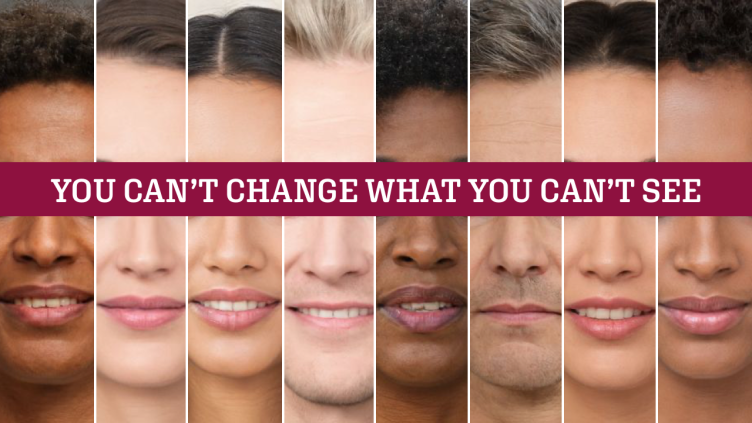For International Women’s Day in 2020, Mindspace released a video that’s been widely circulated since, including in our digital course What Is Implicit Bias and How Can We Address It?. The video asks participants to solve the following riddle:
“A father is about to bring his son to a job interview applying for a position at a large stock brokerage company in the city. Just as they arrive in the company’s parking lot, the son’s phone rings. He looks at his father, who says “go ahead, answer it.” The caller is the trading company’s CEO who says “Good luck son, you’ve got this.” The son hangs up and looks at his father, who is still there in the car. How is this possible?”
In the video, the participants run through all kinds of scenarios. The riddle has done what riddles are supposed to do: stump you.
Does he have two dads?
Is the voice a recorded message?
We watch as many of the 22 people fumble with potential solution after potential solution.
Spoiler alert: none of those are correct.
Upon watching to the end, we learn the answer: the CEO is his mother.
Of course!
We then watch as a handful of participants express their surprise out loud. The surprise is not that there are women CEOs out there, of course. The surprise is that they didn’t think of that.
One of those who gets it wrong says looks into the camera with a bewildered smile.
“That’s so weird because I’m a CEO. And I’m a woman.”
It is weird, but the good news is that the reason for it has a solution. And also a name: implicit bias. And no matter how progressive or socially conscious you think you are, you have it too. We all do.
What is Implicit Bias?
Also referred to as unconscious bias, implicit bias refers to the attitudes or stereotypes that affect our understanding, actions, and decision in an unconscious manner.
Ku Leuven sums it up well: “These biases, which encompass both favorable and unfavorable assessments, are activated involuntarily and without an individual’s awareness or intentional control. The implicit associations we harbor in our subconscious cause us to have feelings and attitudes about other people based on characteristics such as race, gender, age, and appearance. Our implicit associations develop over the course of a lifetime beginning at a very early age through exposure to direct and indirect messages. In addition to early life experiences, the media and news programs are often-cited origins of implicit associations.”
Implicit Bias In Action
Data as recent as February of this year from the Kaiser Family Foundation shows that Black, American Indian, Alaskan Native, and Hispanic people have so far been nearly twice as likely to die from the COVID-19 pandemic.
Twice.
Why is that?
There are obvious socioeconomic systemic inequities and opportunity gaps that contribute mightily to the larger issue of access, and not all medical providers–just like not all people of any profession–believe as deeply in equity as others. But, for our purposes in this particular example, let’s put those factors aside and assume that all doctors are committed to delivering the best possible care to every person, full stop. If this is the case, the main hurdle for the patient is making it into the examination room in the first place, right? After that, they should receive equal care.
But they don’t. And it’s not always the doctor’s fault.
As Michael Ollove writes for Pew, the pandemic put a spotlight on healthcare inequities in a big way, but the inequities didn’t start with COVID. They’ve been there all along.
Ollove writes, “Doctors may not refer Black patients for transplants because of an unconscious belief that they won’t adhere to arduous post-surgery regimens. They may harbor thoughts that women are more susceptible to anxiety and dismiss their complaints of chronic pain. They may see an immigrant with poor English skills and assume that the patient wouldn’t be able to comprehend a complex medical situation. Or they may ascribe a patient’s obesity to a lack of self-control rather than a genetic precondition. . . . Medical providers’ unconscious thoughts are often different from or even in conflict with consciously held beliefs.”
These are examples of implicit bias, which is in no way specific to the field of medicine. It’s all around us, even in ourselves. But the more we realize it, the more we can take steps to correct it.
How Can We Address Implicit Bias?
Walter Gilliam of The Yale Child Study Center famously did a study of implicit bias using preschool teachers as subjects. In it, Gilliam asked 135 educators to monitor four pre-K students for challenging behavior: a black boy and girl and a white boy and girl. There was only one thing: there was no challenging behavior, and (unbeknownst to the teachers) he used technology to scan their eye movements. The results? As NPR reports, “Teachers looked more at the black children than the white children, and they looked specifically more at the African-American boy.”
They didn’t know they were doing it. That’s the unconscious part of unconscious bias. The good news is that there are steps we can take to change that:
Steps to Debias
- become aware a bias has been triggered
- choose to debias
- assess how the bias affects you
- choose and apply the appropriate debiasing technique
- move on.
Your assessment of how the bias affects you will fall under one of three categories–cognitive, motivational, or technological–which will help you determine what strategy or technique works best in that situation. A detailed breakdown of these categories and the specific debiasing techniques can be found in the course, along with an examination into how we reinforce our own bias (confirmation bias).
As teacher and spiritual mentor Michael DeFrancisco said in a video, “don’t fight them [your biases] because you’ll give them power. I think the key is to develop an understanding of yourself with regards to biases, prejudices, and things, and realize that most, if not all of them are in poor vision. Meaning you don’t have enough vision. . . . You don’t have enough broad comprehension to understand the differences that you are seeing.”




